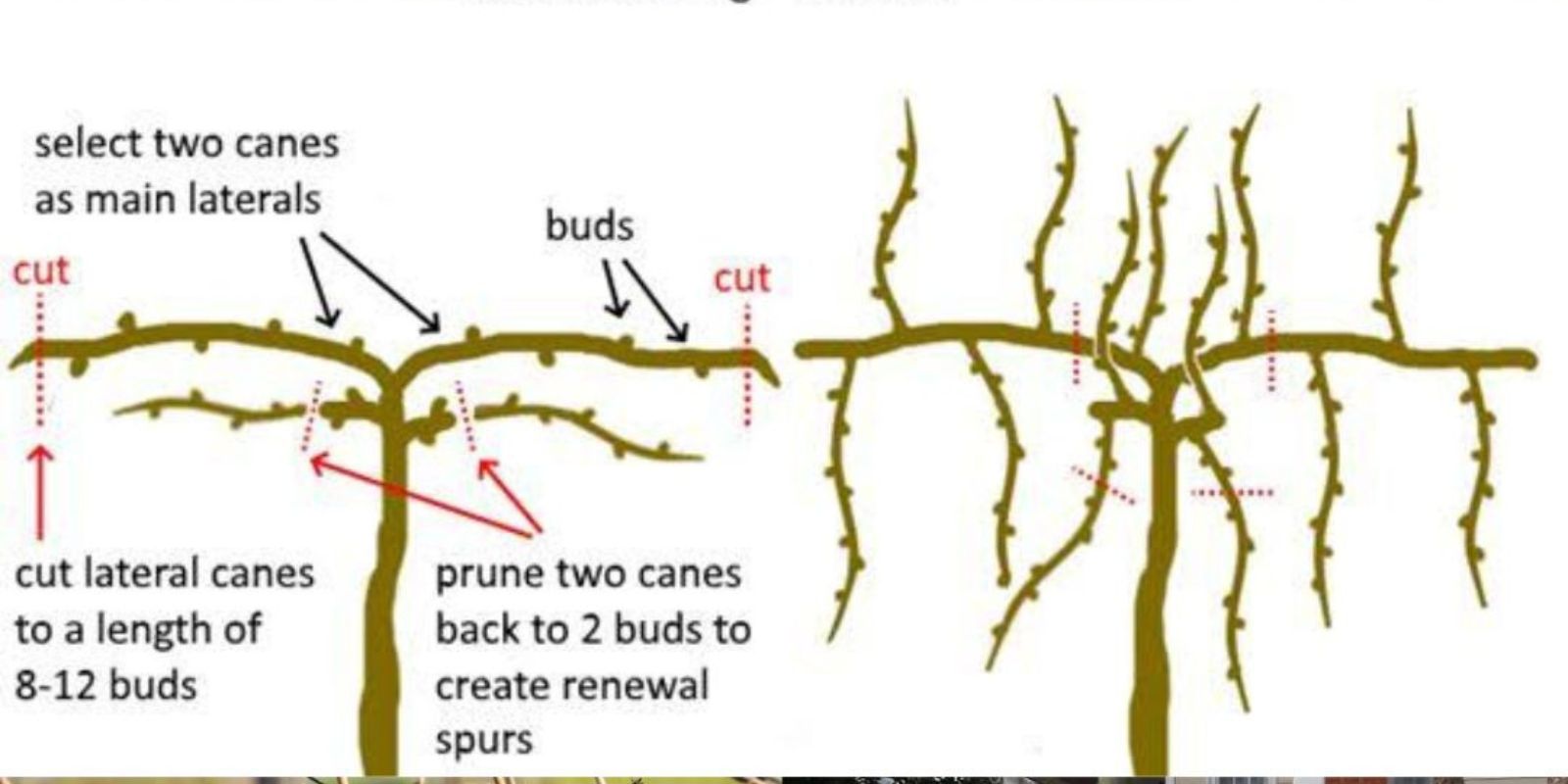Pruning grapevines is one of the most crucial practices for ensuring healthy growth and abundant fruit production. While it may seem intimidating at first, proper pruning can transform your grapevines into thriving, productive plants that yield high-quality grapes year after year. In this comprehensive guide, we’ll cover everything you need to know about pruning grapevines, from the best time to prune to the different methods you can use, ensuring you’re equipped to care for your vines like a pro.
Why Is Pruning Important?
Pruning is essential for grapevine health and productivity because:
- Encourages Fruit Production: Grapes grow on new wood, so pruning stimulates the growth of fresh, fruit-bearing canes.
- Improves Airflow and Sunlight Penetration: Proper pruning reduces overcrowding, allowing sunlight and air to reach all parts of the vine, preventing diseases and promoting better fruit quality.
- Maintains Vine Shape: Pruning helps train the vine to grow in an organized manner, making it easier to manage and harvest.
- Prevents Overgrowth: Left unpruned, grapevines will prioritize foliage growth over fruit production, leading to fewer and lower-quality grapes.
When to Prune Grape Vines
The ideal time to prune grapevines is during their dormant season, typically in late winter or early spring. At this time:
- The plant is not actively growing, so pruning won’t disrupt its energy flow.
- Buds haven’t started to swell, minimizing the risk of damage to future growth.
- Sap flow is low, reducing bleeding from pruning cuts.
For most climates, the best window for pruning is between January and March, depending on your region and weather conditions.
How to Prune Grape Vines
Pruning grapevines involves removing old wood and shaping the plant to encourage healthy growth. Here are the key steps:
1. Inspect the Vine
Start by observing your vine to identify old wood, dead canes, and last season’s growth. Look for strong, healthy canes (about the width of a pencil) that will serve as fruit-bearing canes for the upcoming season.
2. Remove Old and Dead Wood
Cut away all old, unproductive wood and dead canes. This helps direct the plant’s energy to new, fruit-bearing growth.
3. Leave Renewal Spurs
Choose one or two strong canes to become your new main stems. Cut these canes back to 1–1.2 meters (3–4 feet), leaving 6–12 buds on each cane. These buds will produce new shoots that bear fruit.
4. Train the Vine
Tie the selected canes to a trellis, wire, or support structure. This ensures that the plant grows in an organized manner, with adequate spacing for light and airflow.
5. Prune for Renewal
For mature vines, leave renewal spurs—short canes with 2–3 buds—near the base of the vine. These spurs will develop into strong canes for the following season.
6. Address Neglected Vines
For overgrown or neglected vines, rejuvenation should be done gradually over several years:
- Select one or two healthy canes to serve as the new main stems.
- Remove all other canes and trim the selected ones to 1.2 meters.
- Each year, cut back the old trunk below the new growth to encourage fresh, productive wood.
Special Pruning Techniques
Depending on the grape variety and your climate, you can use different pruning methods to maximize fruit production:
1. Kniffen Method
The Kniffen system is ideal for table grapes or varieties that don’t need winter protection.
- Use two horizontal wires, with the lower wire 1 meter (3 feet) from the ground and the upper wire at 1.5 meters (5 feet).
- Train the vine so that two canes grow along each wire, creating a “four-arm” structure.
- Prune shoots along the lower wire to leave only two buds each and remove excess growth between wires.
2. Spur Pruning
Common for wine grapes, spur pruning involves leaving several short canes (spurs) with 2–3 buds each. This method encourages consistent fruit production and simplifies vine management.
3. Cane Pruning
Best for table and dessert grapes, cane pruning involves selecting 1–2 healthy canes from the previous season and cutting them back to 10–12 buds each. Tie these canes to a trellis for support.
Tips for Pruning Success
- Don’t Be Afraid to Prune Aggressively: Grape vines thrive when pruned heavily—remove up to 90% of the previous year’s growth to ensure the best results.
- Sterilize Your Tools: Clean pruning shears before and after use to prevent the spread of diseases.
- Keep a Balanced Load: Avoid leaving too many buds, as this can lead to overcrowding and smaller fruit.
- Use Proper Tools: Invest in sharp, high-quality pruning shears for clean cuts that heal quickly.
After-Pruning Care
Pruning is just the first step; proper aftercare is essential to support your vines:
- Fertilize Sparingly: Apply a balanced fertilizer after pruning to support new growth. Avoid over-fertilizing, as this can promote excessive foliage growth.
- Watering: Ensure consistent watering, especially during dry periods, to prevent stress on the vines.
- Pest and Disease Management: Monitor your vines for signs of pests or diseases and treat them promptly to protect your investment.
Common Mistakes to Avoid
- Pruning Too Late: Delayed pruning can damage swelling buds, reducing fruit production.
- Not Pruning Enough: Light pruning results in overcrowded vines and poor-quality grapes.
- Leaving Dead Wood: Failing to remove dead or diseased wood can lead to infections and hinder new growth.
Why Proper Pruning Matters
Pruning is more than just maintenance—it’s an art that ensures your grapevines produce abundant, high-quality fruit. By removing old growth and shaping the plant, you’re giving it the structure and resources needed to thrive.
With the right pruning techniques, even novice gardeners can enjoy the rewards of homegrown grapes, whether for eating fresh, making wine, or creating delicious preserves.
Get Started Today!
Don’t wait to transform your grapevines into productive powerhouses. Share your pruning progress, success stories, or tips with us—we’d love to hear from you!
#GrapeVines #PruningTips #FruitGardening #HomeGardening #GrowYourOwnFood #VineyardCare #GardeningMadeSimple #HealthyHarvests

